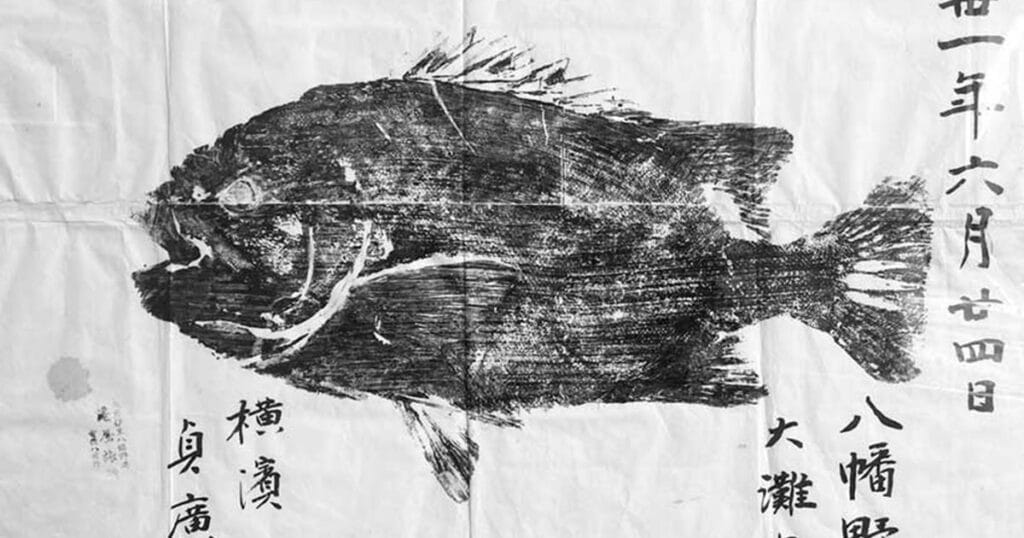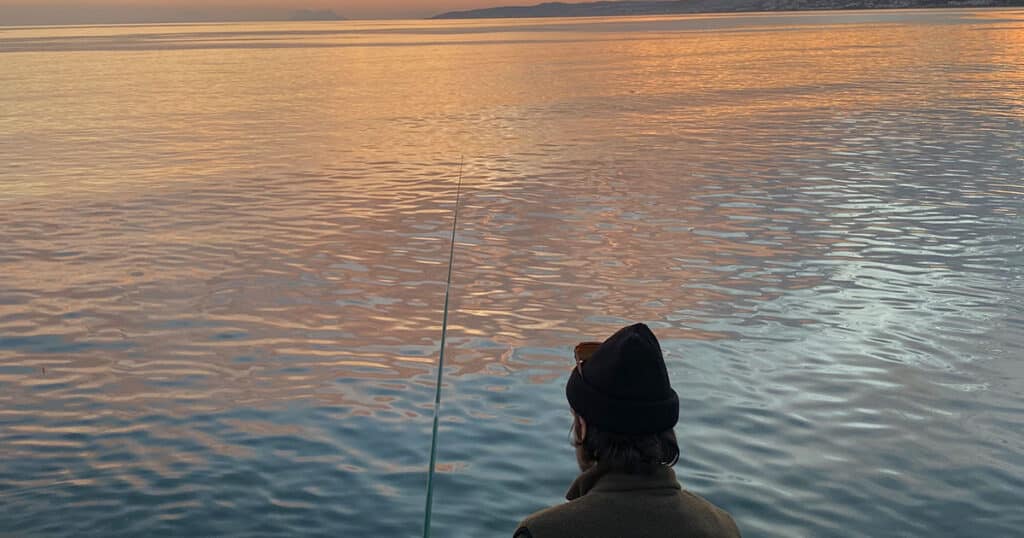Gyotaku is a Japanese printing technique created before photography, when there were only fish and ink.
Japan, 19th century. Fishermen printing their catches on rice paper. Not for art. For records. An accurate way—almost scientific—to document what came out of the water. Exact measurements. Faithful scales. A kind of naturalistic document made with the animal’s body. No camera.
The reason was simple: certify the size of the fish. When a fisherman claimed to have caught an unusually large specimen, proof was needed. Gyotaku was born from that need. There was no time to sculpt nor tools to depict. But there was ink. And paper. So it began: as evidence. As data. As proof.
It was called gyotaku. Literally: “fish print”.

It’s not painting. It’s not drawing. It’s contact. The body of the fish is inked and pressed onto the surface. Its shape, texture, existence is transferred. Then, sometimes, it is cleaned, cooked, eaten. The paper remains as the only proof. A flat record of something that was.
In Estepona, there is no tradition of gyotaku. No rice paper nor sumi ink. But there is the sea. There is fishing. There is coastal culture. And there is something in common: the need to record what happens. What is caught. What does not return.
The boats leave at dawn. They return with boxes full. Some fish go to the market or beach bar. Others go to memory. The hands that pull them from the water know their weight, their smell, their struggle. All of that could also be printed.
Thinking of gyotaku from Estepona is not a matter of homage or exoticism. It is more a question: how do we document what we live? What trace remains of what only happens once?
The Japanese technique used black ink and precision. Today, many artists reinterpret it with color, with layers, with aesthetic intention. But the idea remains the same: to capture the exact moment. The real silhouette. What was there, even though it is no longer.

Both work with body and ink. Both turn the ephemeral into form. Both fix something that has already passed. The fish returns to the sea or ends in the fire. The moment disappears. But something remains.
The archive, in the end, is not just for preservation. It’s for observation. To understand what was. Even if it’s an exact shadow. Even if it no longer moves.
In Estepona, the sea keeps speaking. Perhaps gyotaku was never part of this coast, but its logic was. Because here memory is also printed. Sometimes on paper. Sometimes on skin.